

In my previous post on Châteauneuf-du-Pape, I spent a fair amount of time talking about Grenache. It is the predominant grape variety in Châteanuef-du-Pape, accounting for about 3/4 of the appellation’s total plantings. This number is slightly inflated since it also includes Grenache Blanc (2.5%) and Gris (a minuscule amount). As is the case with other grape varieties with color mutations, Grenache in its various hues shares the same DNA profile. Technically, it is one grape variety from a scientific perspective. Still, for our purposes, we will count it as three since a decades-old revision of the permitted grape varieties specifically mentions color variations. The percentage after each variety represents roughly the percentage presently planted in Châteauneuf-du-Pape.
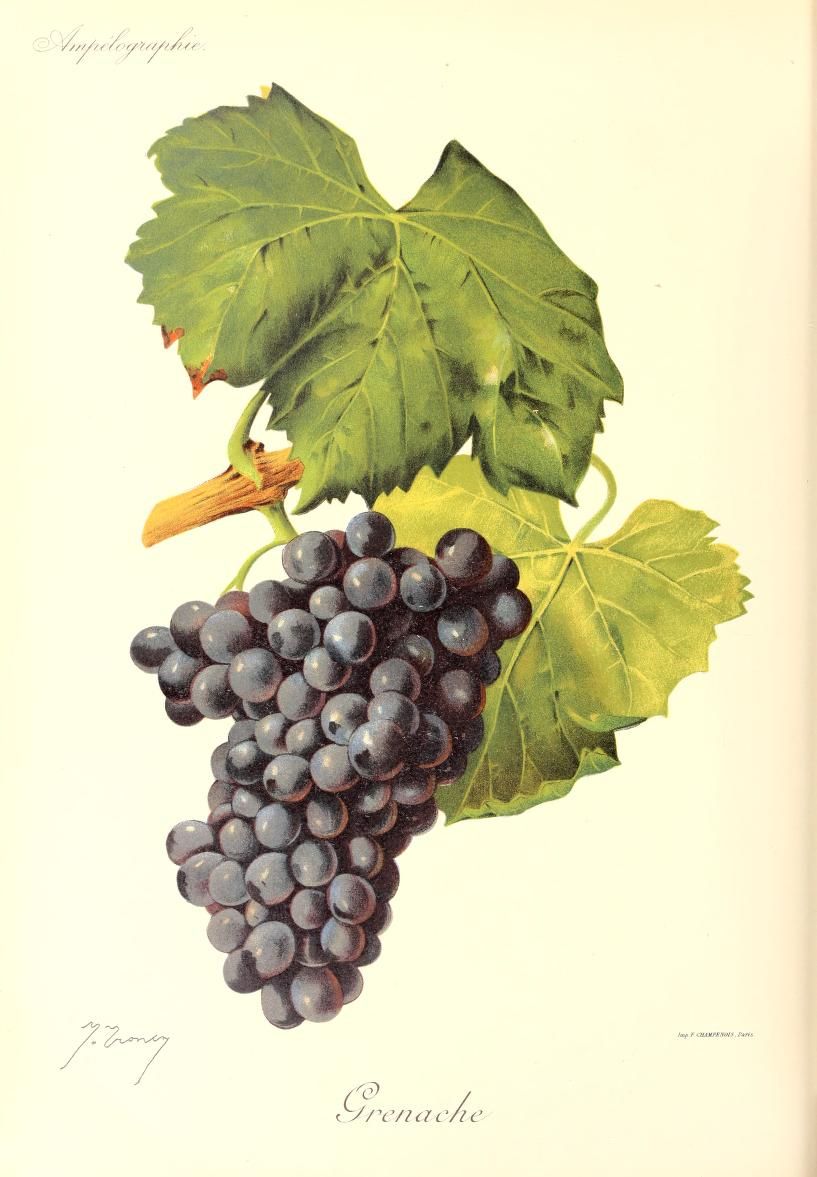 Grenache Noir (72%)
Grenache Noir (72%)A while back, we heard some of our growers on both sides of the Pyrenees begin to refer to Grenache as the Pinot Noir of the South. Hearty and adaptive as a vine and the wine it makes, Grenache can make satisfying everyday wine and some of the most exquisitely detailed expressions of terroir. Its ubiquity and flexibility mean it has never been considered a noble grape variety. I suspect part of this is due to its ability to get rather boozy and flabby if not farmed carefully, and attention is not paid to harvesting it at the right point. Still, Domaine Marcoux brings in some notably ripe Grenache that makes you wonder how they coax their indigenous yeasts to not quit in protest of their daunting task ahead. Thin-skinned, Grenache can be startling pale in color sometimes, but as the vines age and the berries and clusters get smaller, these light-hued wines can still pack a fair amount of tannic structure. Because it is the predominant variety in Châteauneuf-du-Pape, it is tempting to skip over it to glean some insight into the wines by closely examining the amounts of other varieties in the blend, rather than where the Grenache was grown. Sandy soils for delicacy and finesse, limestone for structure, red clay, and galets for power. A grower can either blend these expressions or feature them. Examples of pure or nearly pure Grenache Cuvées are: Janasse Chaupin, Marcoux Vieilles Vignes, Clos Saint Jean Sanctus Sanctorum, Clos Saint Antonin, Giraud Grenaches de Pierre, & Sabon Le Secret.
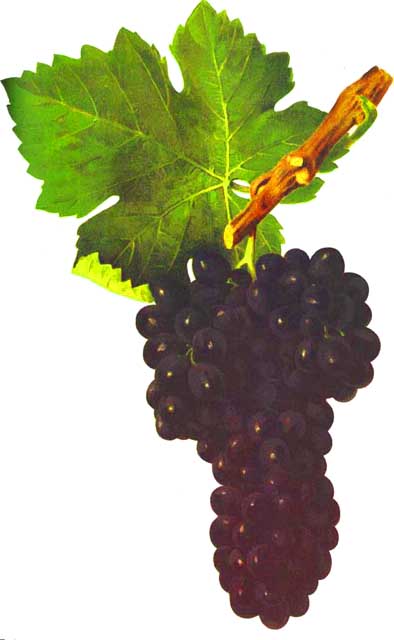 Syrah (10.84%)
Syrah (10.84%)A grape with a fascinating pedigree when you chase it back to its roots near the border of France and Switzerland, Syrah is famous for the great wines of the Northern Rhône where its hallmarks of dark fruit, finely chiseled tannins, pepperiness, smoked meat, and leather are in full display. Moved to a warmer and more gentle climate, the ferocious character of Syrah is somewhat tamed and more composed, but it still lends a darker fruit character and structure to the Grenache of Châteauneuf-du-Pape. When visiting our growers, almost no one talks about Syrah which might be an interesting topic to bring up the next time I visit. Others like Mourre du Tendre imply that it is an interloper, which considering the region’s conservative politics, may be a topic not worth exploring in detail. Another benefit of Syrah is that it ripens several degrees below Grenache, which reduces the alcohol level of the finished wine and provides a little extra freshness. On the winemaking side, Syrah (and Mourvèdre) is useful for maintaining a stock of barrels since it takes better to new wood than the relatively more transparent Grenache. Chances are, if you see a new demi-muid in a cellar, there’s Syrah in it. In recent vintages where there have been problems with Grenache, the character of Syrah is readily more apparent. It’s a pushy grape in a blend.
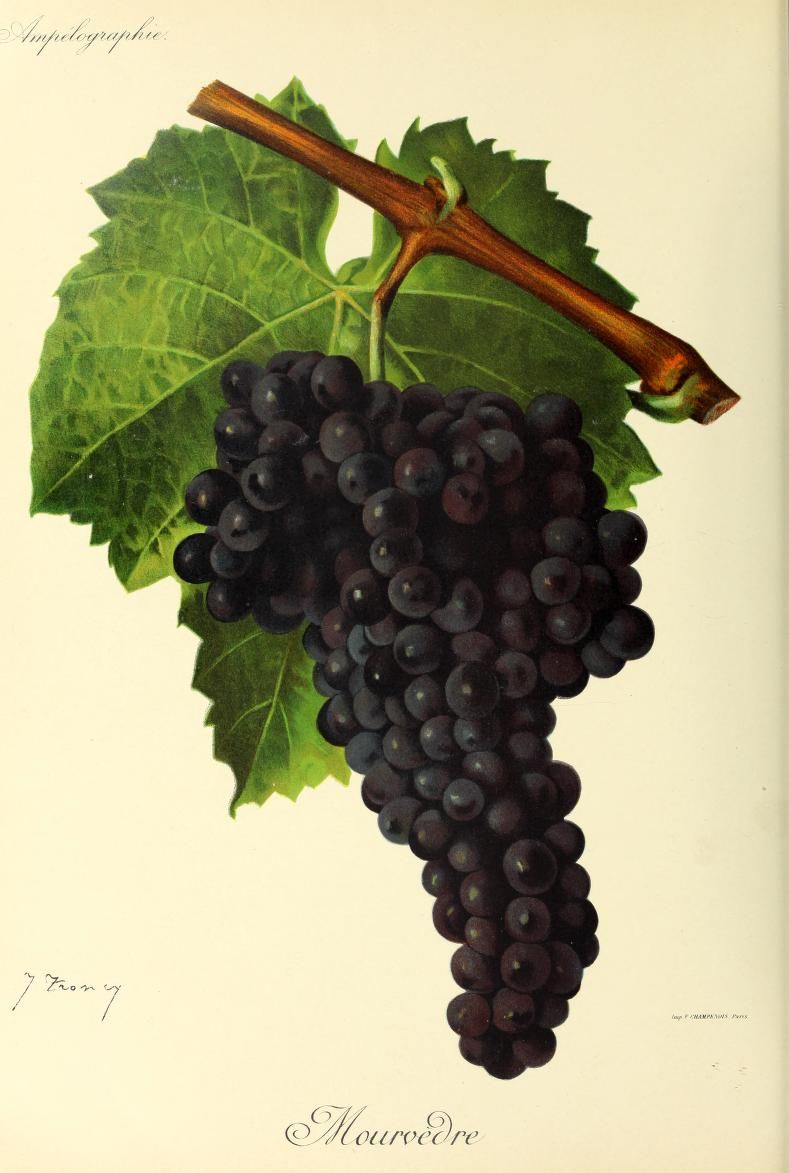 Mourvèdre (6.61%)
Mourvèdre (6.61%)Like Grenache, Mourvèdre is a Spanish variety that has long been grown in the Southern Rhône and Provence. As warm as these places are, it is really at the northern edge of its viability as it generally ripens late and well into September and October when storms can play havoc with the harvest. It can be green, angular, and hard to love when not fully ripe, so it is generally suited to the warmest terroirs of Châteauneuf-du-Pape. Like Syrah, it adds structure and dark fruit to the wines of Châteauneuf-du-Pape, along with its signature cedar and herbal aromas. Unlike Syrah, however, growers in the Southern Rhône are happy to talk about their Mourvèdre. There is growing interest in this variety since it is highly drought tolerant when planted in clay, and it thrives in the heat. Considering that the early effects of climate change show that these conditions are becoming more common in the Southern Rhône, Mourvèdre is seen as a hedge against the vagaries of the future. While we do not have a grower that focuses on this variety like Château Beaucastel, we do have two wines where Mourvèdre is an important part of the final blend: Clos Saint Jean Deus ex Machina, and Mourre du Tendre Très Vieilles Vignes. Next to Syrah, Mourvèdre is the variety you will most likely see in 225-600L French oak barrels since it is less prone to oxidation than Grenache and easily shrugs off the flavors of new wood.
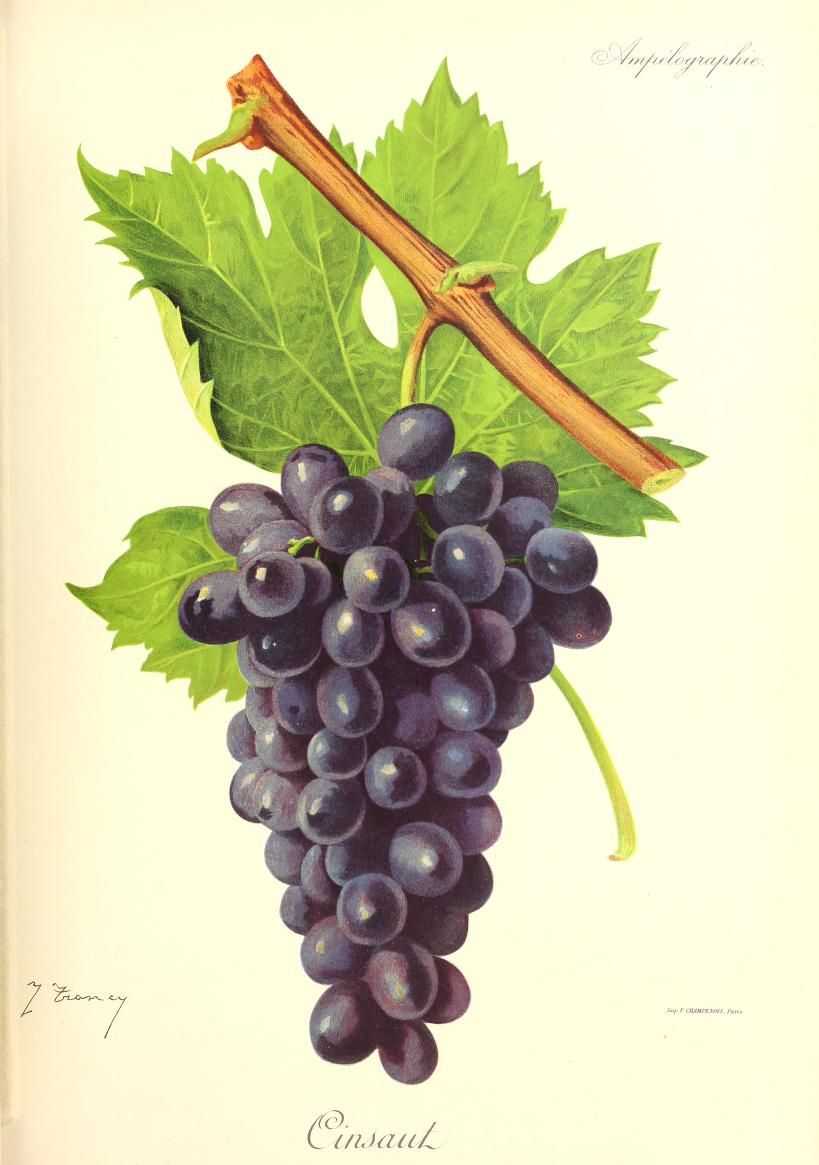 Cinsault (2.57%)
Cinsault (2.57%)Poor Cinsault, always the bridesmaid, never the bride. For some reason, Cinsault in the Rhône Valley has been firmly relegated to a supporting role or, potentially worse, only suitable for Rosé. Outside the big three red varieties in Châteauneuf-du-Pape, it is the most widely planted and five times more common than Counoise, Muscardin, Vaccarèse, and Terret Noir combined. It serves a vital role both traditionally and potentially in the future. It blends very well with Grenache, sharing a more delicate red-fruit flavor profile, a racy acidity, and beautiful aromatics. Most importantly is moderates the higher alcohol levels of Grenache without significantly changing the flavor profile of the wine. Drought tolerant and late to flower, it needs to be carefully managed to keep its vigor in check as its large berries and clusters have the outward appearance of vulgar enthusiasm. Cinsault shows up in small proportions in several of Châteauneuf-du-Papes: Roger Sabon Les Olivets & Prestige, Domaine Marcoux, Janasse Vieilles Vignes, and Clos Saint Jean Vieilles Vignes and Combe des Fous. If you’d like to taste Cinsault on its own, we recommend Domaine Courbissac Farradjales and Domaine des Tourelles Cinsault Vieilles Vignes. While outside the Rhône Valley, both these wines capture the charms of this under-rated variety. Also, don’t miss the charming rosé from Paradou.
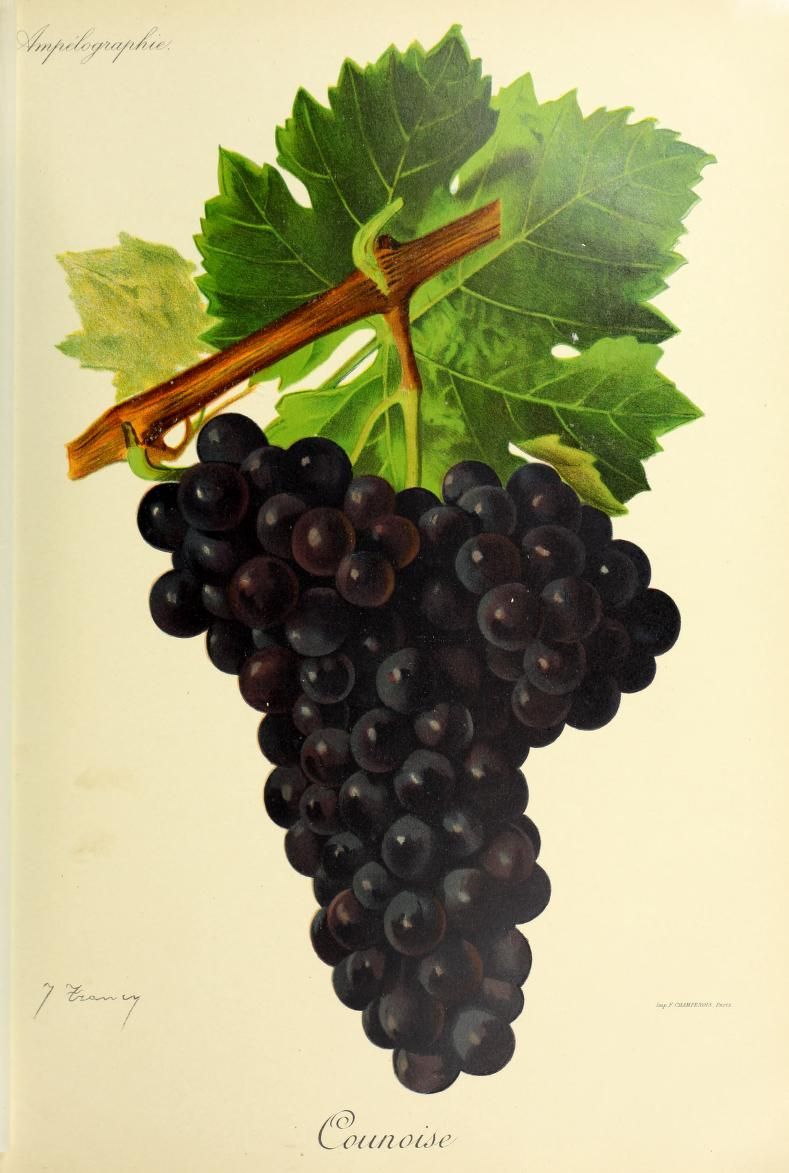 Counoise (0.44%)
Counoise (0.44%)A minor player in the Rhône Valley Counoise shows up in smaller percentages in older vineyards when it was the custom to intermix a diversity of grape varieties in one plot as a hedge against losing an entire crop to inclement weather during flowering or the ever-present threat of rain during harvest. Those few pure varietal wines made from Counoise reveal a very pale color, a lighter body, moderate alcohol, and a peppery finish. It is included in such a small proportion in several of our Châteauneufs that it would be difficult to say what individual character it imparts other than a fractional depth of complexity. Interestingly it is related to the Picpoul family of grapes, so it is most likely indigenous to this part of France.
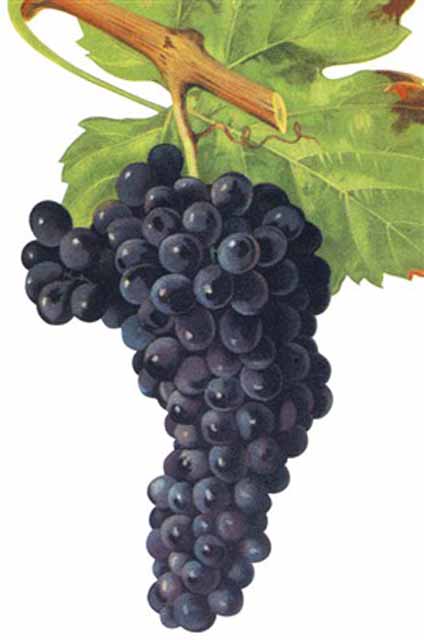 Muscardin (0.34%)
Muscardin (0.34%)Unlike Counoise, which has developed a small cult following in California after Tablas Creek planted it in Paso Robles, Muscardin as a varietal wine shows why it is more suitable as a seasoning rather than a full course. High in acid, light in color, moderate in alcohol, it has some use in lightening the denser qualities of Grenache, Syrah & Mourvèdre. It is such a minor player that theories suggest it may be related to either the Syrah pedigree, the Picpoul pedigree, or both. It is so insignificant that no one has really bothered to sort it out.
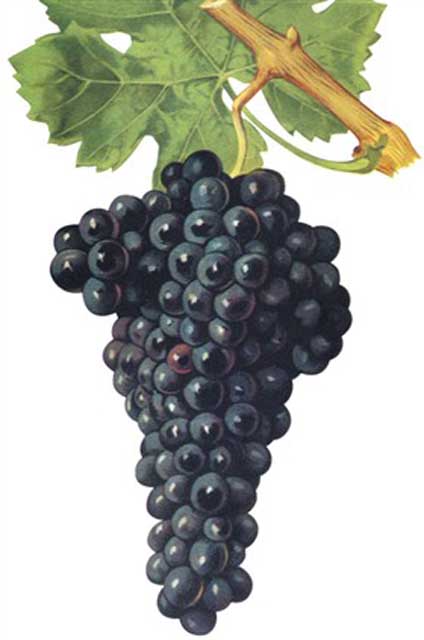 Vaccarèse (0.13%)
Vaccarèse (0.13%)Despite amounting to only 12 hectares in France, Jancis Robinson lists this variety in Wine Grapes as Brun Argenté due to its dark-colored berries and the silvery downy leaves. It also goes by Camarèse around Nîmes, so if you divide its three names by the total plantings, you come up with 4 hectares for each. Despite its scarcity, several of our growers in and around Châteauneuf-du-Pape grow Vaccarèse including Roger Sabon, Clos Saint Jean, and Jérôme Bressy at Gourt de Mautens. Tablas Creek has a small vineyard planted in Paso Robles and has made an experimental cuvée of Vaccarèse. They report that it is reminiscent of a Loire Valley Cabernet Franc.
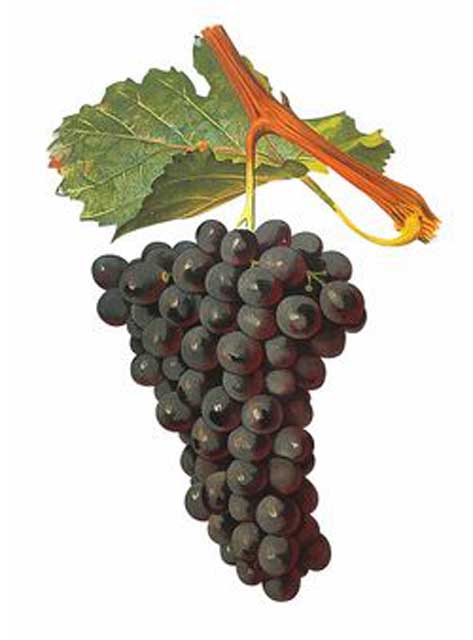 Terret Noir (0.03%)
Terret Noir (0.03%)An old variety that comes in three hues, Noir, Gris, and Blanc, Terret originated in the Languedoc and was once widely planted there. Abundant in yields and prone to several diseases and pests, it has been in severe decline over the last half-century. High in acid but moderate in alcohol and color, it is easy to see why Terret could theoretically be useful in tempering the exuberance of Grenache. Still, with less than a hectare scattered around Châteaueneuf-du-Pape, it is hard to say exactly what it contributes apart from academic interest. It is only mentioned as part of Roger Sabon’s Prestige bottling, which isn’t surprising since the source for this cuvée are older vineyards where it is common to find many surprises mixed in with the Grenache, Syrah & Mourvèdre. Jérôme Bressy also has a little Terret Noir in his Vaucluse Rouge and Brunnhilde Claux grows Terret Gris which goes into her skin-contact L’Orange.
Immense thanks to Wine Grapes by Jancis Robinson, Julia Harding & José Vouillamoz for many of the sources and insights I used to track down those few growers who are champions of the more obscure grape varieties above as well as Tablas Creek in California who have championed these varieties in the United States.